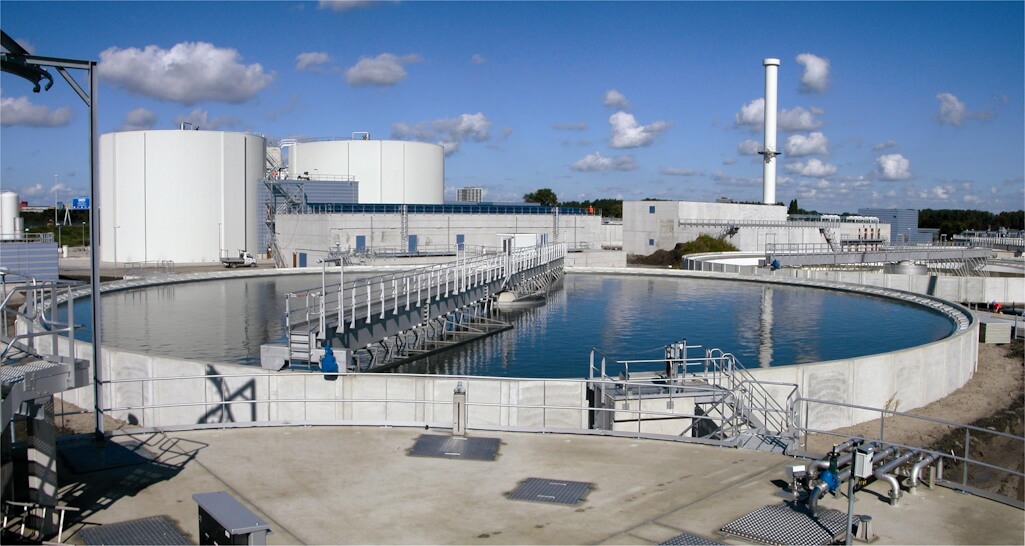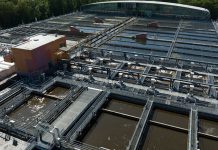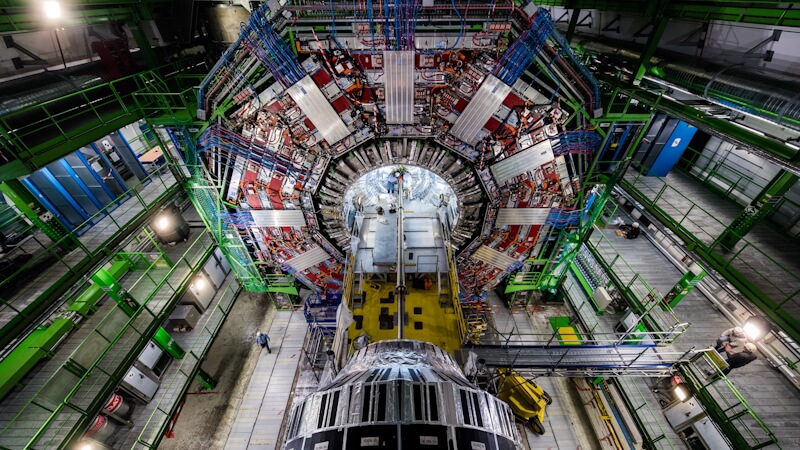Desalination plant in the port of Hamburg, Germany
Of all our planet’s resources, water is arguably the most essential, but it is also the one that is most under threat. The world’s food supply depends on it: indeed, agriculture accounts for 72% of all freshwater withdrawals. In future, water conservation, recycling, the conversion of wastewater into drinking water, and desalination all have a part to play in delivering solutions to a parched world. In each of these solutions, stainless steel plays a role.
By James Chater
Water woes
Water, or the lack of it, impacts our lives in many ways. It is increasingly a cause of political conflict and social unrest – and one that has been weaponised. The destruction of the Kakhovka Dam in Ukraine devastated a whole region and has been described as an act of ecocide. The decision to discharge treated wastewater from the Fukushima Daiichi nuclear power plant in Japan has worried its neighbours. The Legionnaire’s bacterium was found in the water supply of the Bibby Stockholm barge that was supposed to house asylum seekers in the UK, while an outbreak of the same disease in the Polish city of Rzeszow killed five people. Eight people were killed when a violent rainstorm trapped tourists inside a sewage system in Moscow. Residents of Jackson, Mississippi, were deprived of water for weeks after pumps at the local water treatment plant failed. After leaving the EU, the UK is allowing its water companies to pump sewage into the sea, which has led to protests from French politicians in the European Parliament. In Africa, drought is a major cause of conflict and emigration. These cases are symptoms of a massive failure to invest in water infrastructure. Experts have been warning for years that water supply is failing to keep pace with demand in a world where global warming and population increases – especially in urban areas – is taking its toll. As the FAO writes:
“Water resources per person have declined 20% in the past decades and water availability and quality are deteriorating fast due to decades of poor use and management, over extraction of groundwater, pollution and climate change. We risk stretching this precious resource to a point of no return” (1).
The recent rise in food prices caused by the war in Ukraine and the strain on grain supplies will be further exacerbated by the El Niño weather pattern, which is expected to trigger extremes of drought and violent storms. It is not only irrigation and agriculture that suffer if water is lacking. Water-based nuclear reactors such as PWRs and BWRs are especially vulnerable to drought, and several industries, such as hydrogen and mining, are at risk because of uncertain water supplies. Water has been called the “Cinderella” of climate investment (2). And with good reason: water treatment as a vital human need has been massively overlooked compared with energy. In some countries, fully half of mains water is lost to leakage. Despite decades of discussion, very few homes are fitted with greywater that could replace drinking water as a way to flush toilets.
Types of water
Potable water (drinking water). Water considered safe to drink or use in food preparation. There are no universal quality standards; each country or region has regulations determining the maximum permissible concentration of various substances, including minerals, bacteria, and pesticides.
Fresh water (freshwater) is naturally occurring water containing a low proportion of dissolved salts (0-500 ppm) or other dissolved solids. It is not always potable water. It makes up less than 3% of the world’s water resources, and just 1% of that is readily available. Found in ponds, lakes, rivers, streams, and aquifers.
Brackish water. Salt content of 500-30,000 ppm. Found in estuaries, seas, lakes, and swamps.
Salt water (saltwater, saline water). Salt content of 30,000-50,000 ppm. Found in seawater and salt lakes.
Brine (briny water). 50,000 ppm or more. Found in brine pools.
Also used are the terms greywater (domestic wastewater) and blackwater (domestic wastewater from toilets). The former finds use in non-potable applications such as toilet flushing and irrigation.

Projects
With investment lagging behind, what is being done? Some highly ambitious projects are underway in some of the world’s most drought-stricken regions. In April the World Bank approved a loan of 100 million USD to El Salvador to improve its water infrastructure. Spain will spend 2.2 billion euros to alleviate severe drought conditions. But it is above all in India (see box) and China that ambitious infrastructure projects are underway. In 2022, China upped its water investment by 22%, and plans include new canals, reservoirs and storage facilities aiming to boost irrigation and stem floods and droughts. However, some of the plans, including water diversion, have been criticised, and it is alleged there is too little emphasis on recycling, desalination, and reduction in demand.




Solutions for water conservation: (1) Rainwater harvesting tank in Rwanda; (2) Rain harvesting filter (photo: Vardhman Envirotech); (3) Greywater fine mesh 40/43mm basket tank inlet filter made of stainless-steel grade 304, used to remove debris from greywater before it enters a greywater treatment tank.
A number of strategies and technologies are available, though most of them have yet to be scaled up or applied to the degree necessary to alleviate a worsening world crisis. Current projects and technologies include:
- Flood prevention/mitigation. In Mississippi, USD 800 million will be spent on flood mitigation, coastal storm damage protection and supply chain resilience. The FAO is helping Somalia to mitigate the effects of flooding due to El Niño.
- Rainwater harvesting and greywater (see box) are two examples of technologies that have been massively overlooked, and which would provide great opportunities for stainless steel suppliers if they were to catch on.
- Decentralised systems. These include wetlands, biofiltration, and anaerobic digestion in off-grid environments lacking sophisticated sanitation.
- Wastewater treatment. Correct and adequate sewage treatment is a huge part of the solution. These include separation of wastewater from drinking water; flood contamination protection; real-time monitoring using sensors; and recycling wastewater as drinking water. Veolia has committed 1.5 billion USD to improving efficiency and the scaling up of water re-use and is working with TotalEnergies on recycling. California’s Orange County Groundwater Replenishment System purifies treated wastewater to a level that it can be injected into groundwater aquifers, augmenting the drinking water supply. It is the largest such scheme in the world.
- Desalination. This is by far the most radical technology available to make wastewater or seawater potable. Desalination plants are of two kinds, thermal or reverse osmosis (RO). RO, being less energy-intensive, is the preferred technology today. An example is the Mirfa 2 project in Abu Dhabi, which uses low-carbon intensive RO technology supplied by Veolia. Recently Butting supplied super duplex piping components to an RO desalination facility near Tel Aviv, Israel.
- Northern Africa and the Middle East are the regions where most of the ongoing projects are located. Egypt has announced its phase 1, in which no less than 21 plants will be built. Morocco started operating its first large plant in Agadir last year and is planning 12 more between now and 2035. The USA’s state of California, another parched region, approved the Doheny Ocean Desalination Project after rejecting a much larger one. Spain has roughly 800 desalination plants, but it is only recently, after years of drought, that they have been running at full capacity. The province of Alicante in south-eastern Spain has embarked on a capacity expansion between 2020 and 2027.
- Smart systems/AI. Smart metering and monitoring in real time can help track consumption, identify leaks, and promote conservation. In 2021 the UK’s Thames Water launched a “Smart Metering Project”, but as of 2023 no new meters have been installed.
Stainless Steel
Stainless steel is ubiquitous in water and wastewater treatment, varying from lower grades such as 304 and 316 to stronger and more corrosion-resistant grades such as duplex and superduplex. Although other materials were used in the past, including wood and carbon steel, stainless is nowadays recommended for its endurance, hygienic qualities, and corrosion resistance. It is found not only in industrial applications but in the home as well, in pipes and in tanks and filters for rainwater harvesting and greywater handling. Duplex grades, which can withstand abrasion and high pressures as well as corrosion, are used frequently in wastewater treatment and desalination.
Pipes, pumps, and valves are all likely to be made of stainless steel.
In thermal desalination, super duplex type 2507 and superaustenitic 254SMO are used to handle aerated seawater; other grades used include lean duplex 2101 (de-aerated seawater/brine) and 316L, preferably with higher Mo content (distilled or drinking water; non-condensable gases).
Reverse Osmosis (RO) desalination plants require far less stainless steel. Super duplex grade 2507 is used for aerated seawater/brine and 316L for permeate (the demineralized water produced from the RO process). (https://stainless-steel-world.net/high-alloy-stainless-steel-in-seawater-desalination-processes)
India
Despite being home to 17% of the world’s population, India has only 4% of the world’s freshwater resources. To meet the demand for water, several community projects and investments have been proposed, involving conservation, rainwater harvesting (e.g., the “Jal Shakti Abhiyan: Catch the Rain” programme), government initiatives, digital interventions, and stemming groundwater depletion (3). The “Clean Ganga” Mission aims to improve and extend wastewater facilities along the river Ganges and protect and rejuvenate the vegetation in the region. Recently WABAG and Metito signed a contract to build a desalination plant in South Chennai.


Conclusion
There is no shortage of ideas, potential solutions, and proposals to solve the water scarcity problem. What is lacking is a sense of urgency and political will.
About this Featured Story
This Featured Story appeared in Stainless Steel World October 2023 magazine. To read many more articles like these on an (almost) monthly basis, subscribe to our magazine (available in print and digital format) – SUBSCRIPTIONS TO OUR DIGITAL VERSION ARE NOW FREE.
Every week we share a new Featured Story with our Stainless Steel community. Join us and let’s share your Featured Story on Stainless Steel World online and in print.








